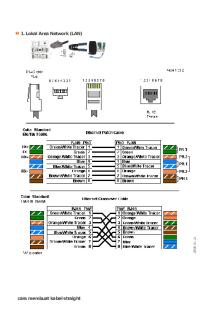Perimeter and Area PDF

| Title | Perimeter and Area |
|---|---|
| Course | Basic Mathematical Concepts Ii |
| Institution | Kent State University |
| Pages | 7 |
| File Size | 377.2 KB |
| File Type | |
| Total Downloads | 69 |
| Total Views | 126 |
Summary
Explanation and Practice Examples about Perimeter and Area. ...
Description
Section 13.2:
Perimeter and Area
Perimeter: The perimeter of a figure composed on line segments is the sum of the measures of the line segments. In other words, perimeter is the distance around. Perimeter is measured in linear units.
Perimeters of Common Polygons FIGURE Square with sides of length s Rhombus with sides of length s Rectangle with sides of lengths a and b Parallelogram with sides of lengths a and b Kite with sides of lengths a and b Triangle with sides a, b, and c
PERIMETER 4s 4s 2a + 2b 2a + 2b 2a + 2b a+b+c
Example 1: Find the perimeter of each figure.
Circumference: In every circle, the ratio of the circumference to the diameter is a constant, called π. If r is the radius of the circle or d is the diameter of the circle, then C = 2πr = dπ
Example 2: Find the circumference of each circle.
2
SECTION 13.2: PERIMETER AND AREA
Area: The area of a plane figure is the measure of the surface covered by the figure. Area is measured in square units. • Rectangle: area of a rectangle with perpendicular sides of length ℓ and width w is A = (length) · (width) = ℓ · w
Example 3: Find the area of the following figure.
Example 4: Find the perimeter and area of the following figure. Assume all angles are right angles.
SECTION 13.2: PERIMETER AND AREA
3
• Square: Since every square is a rectangle, the formula will be the same with length = width. A = (side)2 = s2
• Triangle: Given the height h and the base b, the area of a triangle is found using A=
1 1 (base) · (height) = b · h 2 2
Some remarks about triangles: * Any side can serve as the base. Once you have chosen the base, the perpendicular distance from the opposite vertex to the line containing the base is the height. Therefore, every triangle has three bases and three corresponding heights.
* In an obtuse triangle, the line segment used for the height may lie outside the triangle. * The sum of the lengths of two sides of a triangle is always greater than the length of the third side.
Example 5: Find the area of the following triangle.
4
SECTION 13.2: PERIMETER AND AREA • Parallelogram: Given the height h and the base b, the area of the parallelogram is given by A = (base) · (height) = b · h
Example 6: Find the area of the following parallelogram.
• Trapezoid: The area of the trapezoid with parallel bases of lengths b1 and b2 is given by 1 1 A = (height) · (sum of the bases) = h · (b1 + b2 ) 2 2 Example 7: Find the area of the following trapezoid.
• Circle: The area of the circle with radius r is given by A = πr 2 Example 8: Find the area of the following circle.
SECTION 13.2: PERIMETER AND AREA
5
• Pythagorean Theorem: In a right triangle, if the legs have length a and b and the hypotenuse has length c, then a2 + b2 = c2 . Namely, in a right triangle (leg1 )2 + (leg2 )2 = hypotenuse2
Example 9: Find the perimeter and area of the following figure.
Example 10: Find the perimeter and area of the following figure.
6
SECTION 13.2: PERIMETER AND AREA
Example 11: Find the area and perimeter of the following figures.
Example 12: Find the area and perimeter of the following figure.
SECTION 13.2: PERIMETER AND AREA
7
• Hero’s Formula (Heron’s Formula): Let a, b, and c be the lengths of the sides of a+b+c . Then the area of the triangle is given by a triangle. Let s = 2 A=
p
s(s − a)(s − b)(s − c)
Example 13: Find the area of the following triangle....
Similar Free PDFs

Perimeter and Area
- 7 Pages

AREA Framework
- 3 Pages

Area Fungsional Korteks Serebri
- 4 Pages

Area Under a Curve
- 4 Pages

AREA DI Cantiere - esempio
- 1 Pages

AREA Between Curves - 1
- 4 Pages

Escala MELD - Area adultos
- 4 Pages

Manager Area Job Description
- 4 Pages

Lokal Area Network (LAN
- 9 Pages

Infermieristica DELL AREA Critica
- 13 Pages
Popular Institutions
- Tinajero National High School - Annex
- Politeknik Caltex Riau
- Yokohama City University
- SGT University
- University of Al-Qadisiyah
- Divine Word College of Vigan
- Techniek College Rotterdam
- Universidade de Santiago
- Universiti Teknologi MARA Cawangan Johor Kampus Pasir Gudang
- Poltekkes Kemenkes Yogyakarta
- Baguio City National High School
- Colegio san marcos
- preparatoria uno
- Centro de Bachillerato Tecnológico Industrial y de Servicios No. 107
- Dalian Maritime University
- Quang Trung Secondary School
- Colegio Tecnológico en Informática
- Corporación Regional de Educación Superior
- Grupo CEDVA
- Dar Al Uloom University
- Centro de Estudios Preuniversitarios de la Universidad Nacional de Ingeniería
- 上智大学
- Aakash International School, Nuna Majara
- San Felipe Neri Catholic School
- Kang Chiao International School - New Taipei City
- Misamis Occidental National High School
- Institución Educativa Escuela Normal Juan Ladrilleros
- Kolehiyo ng Pantukan
- Batanes State College
- Instituto Continental
- Sekolah Menengah Kejuruan Kesehatan Kaltara (Tarakan)
- Colegio de La Inmaculada Concepcion - Cebu





